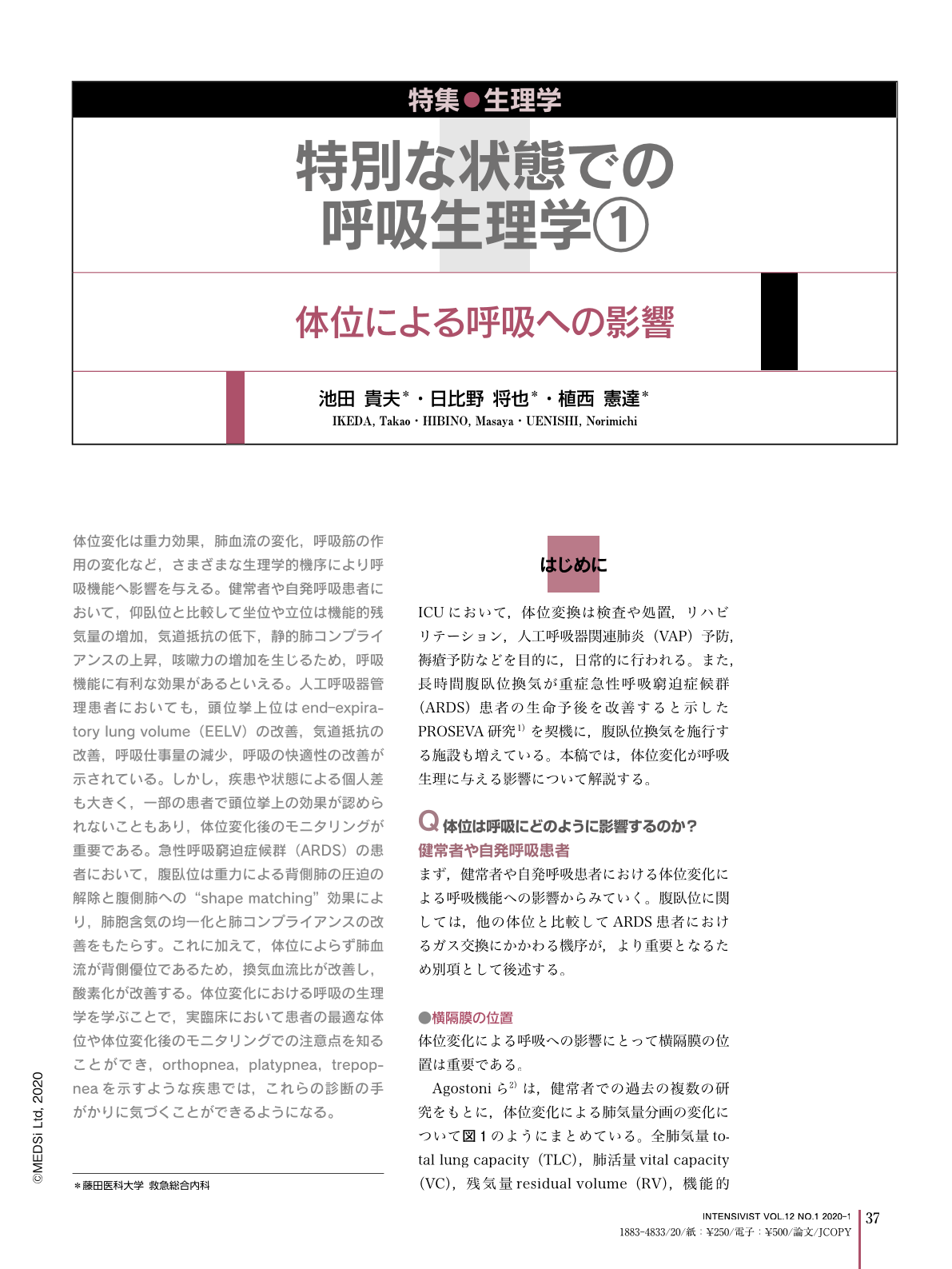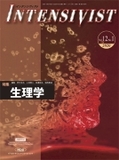Japanese
English
- 有料閲覧
- Abstract 文献概要
- 1ページ目 Look Inside
- 参考文献 Reference
- サイト内被引用 Cited by
体位変化は重力効果,肺血流の変化,呼吸筋の作用の変化など,さまざまな生理学的機序により呼吸機能へ影響を与える。健常者や自発呼吸患者において,仰臥位と比較して坐位や立位は機能的残気量の増加,気道抵抗の低下,静的肺コンプライアンスの上昇,咳嗽力の増加を生じるため,呼吸機能に有利な効果があるといえる。人工呼吸器管理患者においても,頭位挙上位はend-expiratory lung volume(EELV)の改善,気道抵抗の改善,呼吸仕事量の減少,呼吸の快適性の改善が示されている。しかし,疾患や状態による個人差も大きく,一部の患者で頭位挙上の効果が認められないこともあり,体位変化後のモニタリングが重要である。急性呼吸窮迫症候群(ARDS)の患者において,腹臥位は重力による背側肺の圧迫の解除と腹側肺への“shape matching”効果により,肺胞含気の均一化と肺コンプライアンスの改善をもたらす。これに加えて,体位によらず肺血流が背側優位であるため,換気血流比が改善し,酸素化が改善する。体位変化における呼吸の生理学を学ぶことで,実臨床において患者の最適な体位や体位変化後のモニタリングでの注意点を知ることができ,orthopnea,platypnea,trepopneaを示すような疾患では,これらの診断の手がかりに気づくことができるようになる。
Postural changes affect respiratory function through various physiological mechanisms such as the effect of gravity, changes in pulmonary blood flow, and the effectiveness of respiratory muscles. Compared to the supine position in healthy subjects breathing spontaneously, the upright position has a beneficial effect on respiratory function due to increased functional residual capacity, decreased airway resistance, increased static lung compliance, and increased cough effort. In mechanically ventilated patients, the head-up position has been shown to improve end-expiratory lung volume, airway resistance, work of breathing, and respiratory comfort. However, because there are many individual differences in these effects depending on the underlying pathology and overall patient status, careful monitoring after postural changes is important. In patients with ARDS, the prone position leads to homogenization of alveolar aeration and improvement of lung compliance by releasing compression of the dorsal part of the lung due to gravity and the ‘shape matching' effect on the ventral part of the lung. In addition, the dorsal predominance of pulmonary blood flow regardless of body position improves ventilation/perfusion matching and oxygenation. Learning about changes in the physiology of breathing due to postural changes can help to optimize the patient's postural position and identify important points for monitoring after these postural changes. In diseases presenting with characteristic symptoms such as orthopnea, platypnea, and trepopnea, knowledge of the underlying physiology gives clues to establish the diagnosis.

Copyright © 2020, MEDICAL SCIENCES INTERNATIONAL, LTD. All rights reserved.


